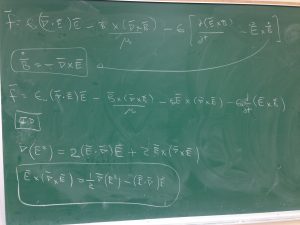Number sequence puzzles are a problem solving staple. There are obvious ones, obscure ones, and famous ones like the Fibonacci sequence. I assert that given a few numbers (say 5 or 6) in a sequence and asked to identify “what is the next number?” there is a way to solve it that won’t generally involve the intended solution, but will nevertheless aways be right. But it is sort of cheating. No, take that back. It is cheating.
The trick is to find the (first appearance of the) sequence you seek in the digits of pi or any other transcendental number like e, phi, or pick your favorite. You can then read off the remaining digits using some convenient grouping to fill out the sequence to arbitrarily large values of necessary. Frequently, unless you have pi memorized to hundreds of thousands, millions, even billions of digits, this will require a program or online resource of some kind to find the sequence in the digits of pi.
Let’s do some examples. Take a few number series puzzles from dailybrainteaser one of many such fun puzzle sites:
What is the next number in this series?
6, 14, 36, 98, 276, ?
First, we look for the pattern 6143698276 in pi using, The Pi-Search Page, or Irrational Numbers Search Engine. The former does a fast, as you type, search over the first 200 million digits while the later does a deeper search out to 2 billion digits (these are just a couple of many sites available). As any small child can see, 6143698276 appears at the 1,962,082,153th digit of pi. A few of the digits after that look like: 614369827631848334. One can then casually claim something like: “the next number in the sequence 6, 14, 36, 98, 276 is 318 where 318 is (obviously) the next three digits after 6143698276 starting at the 1,962,082,153th digit of pi. Bam!” Mike drop. No argument.
As the given sequence gets longer, the less likely one will find the sequence in a transcendental search engine assuming such numbers are essentially a random distribution. For example, the sequence 6143698276 doesn’t occur in the first two billion digits of e or sqrt(2).
Here’s another:
What Comes next in sequence
1 , 4 , 5 , 6 , 7 , 9 , 11 ?
This one’s easy because it is relatively short. The pattern 14567911 appears at the 64,362,285th digit of pi. The few digits after it are 1456791122892. So, with great confidence, you can say “the sequence is obviously 1, 4, 5, 6, 7, 9, 11, 22.” Repeat argument above. End conversation awkwardly.
I appreciate this is quite gimmick-y. One can invent any number of arbitrary solutions to these sequence puzzles. Even for this approach, there will be multiple perfectly correct solutions, even just using pi alone. For example, in our second example above, 14567911 appears an infinite number of times in pi. Puzzles of this kind optimally involve a very specific elegant solution that uses your Puzzler. Nevertheless, this approach is amusing for the first couple times, lets you get your geek out, and can at least temporarily distract family and friends while you really try to solve the puzzle.

